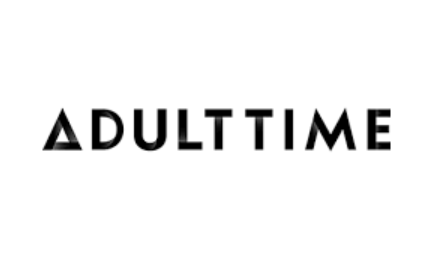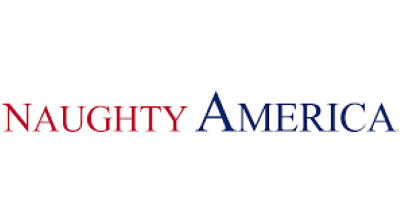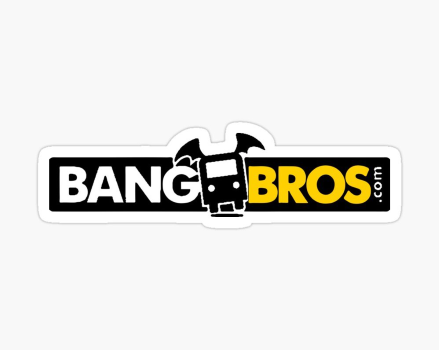When it comes to cinema, there is something truly magical about discovering and watching classic films. From the glamour of Hollywood’s Golden Age to the timeless stories that still captivate audiences today, vintage scores have a unique ability to transport viewers to another era. Whether you’re a film buff or just looking for some new movie recommendations, unlocking the magic of vintage scores will surely take your cinematic experience to the next level.

Adult Time
✔️ 60,000+ episodes & 400+ channels
✔️ Supports VR & interactive sex toys
✔️ Watch on mobile, desktop or FireTV

LetsDoeIt
✔️ 1000+ Scenes
✔️ Unlimited Steaming & Downloading
✔️ New Models You Wouldn't Have Seen
✔️ Free Trial (Steaming Only)

Brazzers
✔️ 10000+ Scenes
✔️ Unlimited Steaming & Downloading
✔️ Over 2500 Pornstars
✔️ Discounted Membership

Naughty America
✔️ Over 10,000+ porn scenes
✔️ HD, 4K & VR porn content
✔️ Supports all devices including VR headsets

Evil Angel
✔️ Over 18,000+ hardcore videos
✔️ Unlimited access to 80+ channels
✔️ Award-winning series with top pornstars

MamaCitaz
✔️ 800+ Scenes
✔️ Unlimited Steaming & Downloading
✔️ Exclusive Latina Models
✔️ Free Trial For Two Days
Exploring the Beauty of Orchestral Music in Classic Films
The first thing that comes to mind when thinking about vintage scores is orchestral music – grandiose and melodic pieces that elevate the cinematic experience. In contrast to contemporary movies where pop or electronic music dominates, many classic films relied heavily on orchestral arrangements for their soundtracks.
One notable example is Gone with The Wind (1939), which features an iconic score composed by Max Steiner. The opening credits alone are enough to give viewers goosebumps, thanks to the powerful strings and brass sections that sweep them away into Scarlett O’Hara’s world. The score perfectly captures the epic nature of this historical drama and has become inseparable from its legacy.
Another standout example is Ennio Morricone’s hauntingly beautiful score for The Good, The Bad, and The Ugly (1966). As one of Sergio Leone’s acclaimed spaghetti westerns, this film relies heavily on its soundtrack to set the mood and create tension throughout its three-hour runtime. With a mixture of whistling tunes and sweeping orchestrations, Morricone’s score adds depth and emotion to the already intense plotline.
From these two examples alone, it is clear that orchestral music plays a vital role in shaping the atmosphere and emotional impact of classic films. The use of traditional instruments adds a timeless quality to these scores, making them just as captivating now as they were when first heard by audiences.
Soundtrack Or Score? Understanding the Difference
Before we dive deeper into specific vintage scores, it is essential to understand the difference between soundtracks and scores. While these terms are often used interchangeably, there is a significant distinction between them that affects how we experience film music.
A soundtrack refers to all the songs featured in a movie, whether they were written specifically for it or not. These can include popular hits, original compositions, or even pre-existing classical pieces. In contrast, a score refers explicitly to instrumental music composed specifically for a film.
While both soundtracks and scores contribute to the overall cinematic experience, it is the latter that truly captures our attention and draws us into the world on screen. It takes skill and precision to create a successful score that not only complements but also enhances the visuals and storytelling of a movie – something that many classic films have achieved flawlessly.
The Golden Age of Hollywood: A Rich Source of Vintage Scores
The term Golden Age of Hollywood typically refers to the period from the 1930s through the 1950s when American cinema was at its peak in terms of popularity and artistic achievement. This era produced some of the most iconic films in history, with equally memorable scores accompanying them.
Among these legendary works is Alfred Hitchcock’s Vertigo (1958), featuring an ethereal score by Bernard Herrmann. The main theme alone has become synonymous with suspenseful scenes and has been used countless times in pop culture references since then. Its haunting melodies perfectly capture the psychological thriller’s dark tone while adding another layer of emotion to its complex storyline.
Another notable example from this era is Star Wars (1977), which may not technically be considered a classic film yet but certainly has all the makings of one. John Williams’ iconic score is as equally recognizable and beloved as the franchise itself. Its grandiose, sweeping orchestrations have become synonymous with science fiction and adventure, setting the standard for many films that followed in its footsteps.
From epic romances to thrilling adventures, classic Hollywood produced an endless array of memorable films with equally remarkable scores. These vintage scores continue to resonate with audiences today, proving their timeless appeal and impact on cinema.
Beyond Classical: Exploring Different Genres in Vintage Scores
While orchestral music dominates in classic film scores, there are also notable examples of other genres making their mark. From jazz to rock ‘n’ roll, these unconventional choices add another layer of uniqueness to already standout films.
One prime example is the soundtrack for A Hard Day’s Night (1964), featuring original songs by The Beatles themselves. This British comedy follows a day in the life of the Fab Four and showcases their musical talents throughout, creating a unique blend of film and concert experience. The energetic tracks such as Can’t Buy Me Love and And I Love Her perfectly capture the band’s charm and charisma while adding a new dimension to their music.
Another instance where popular music took center stage was in Quentin Tarantino’s cult classic Pulp Fiction (1994). While this film falls outside our 2025 timeline, it still deserves recognition for its use of vintage songs from various genres – surf rock, soul, pop – that set the tone for each scene. This bold choice adds depth and character to an already captivating movie.
These examples show how combining different genres can create a truly eclectic soundtrack or score that stands out from traditional orchestral arrangements. It opens up possibilities for filmmakers to experiment with different sounds and elevate their storytelling further.
Reviving Vintage Scores: The Impact of Re-Releases and Remakes
As we enter 2025, it is no surprise that many classic films are receiving re-releases or remakes. While some may argue against tampering with original works, these efforts also bring vintage scores back into the spotlight and introduce them to a new generation of viewers. Although there are many ways to socialize and connect with individuals online, yiff chat offers a unique and interactive platform for those interested in furry fandom. You can save big on your next adult film purchase with this special discount offer from XXX Pawn. Don’t miss out – visit this hyperlink now.
One example is West Side Story (1961), which recently received a remake set to release in 2021. The original film’s score by Leonard Bernstein and Stephen Sondheim has become iconic, and its songs have remained popular even after six decades. With this upcoming remake, audiences will have the opportunity to hear updated versions of beloved tracks such as Maria and America while still appreciating the original score’s timeless appeal.
Another revival worth mentioning is Disney’s live-action adaptation of their beloved animated movie Beauty and the Beast (1991). While this film falls outside our timeline, it serves as an excellent example of how reintroducing classic soundtracks can reignite interest in vintage scores. In this case, Alan Menken’s enchanting melodies were given new life through updated arrangements while staying true to the original compositions – proving that classic music never truly goes out of style.
The Legacy Continues: Modern Films Inspired By Vintage Scores
While it is essential to acknowledge the impact of vintage scores on modern films, it is equally crucial to recognize how they continue to inspire current filmmakers. Many contemporary movies take inspiration from classic scores, incorporating similar elements or paying homage to specific pieces.
One such instance is Hans Zimmer’s Academy Award-winning score for Interstellar (2014), which takes clear inspiration from Philip Glass’ work on Koyaanisqatsi (1983). Both employ minimalistic, pulsating rhythms that create a sense of urgency and drive the narrative forward. By using a Bukkake Porn Deals coupon, you can access top-rated bukkake porn sites at discounted prices on Julie-Annes.co.uk. However, Zimmer masterfully adds his unique touch to the score, making it a standout work in its own right.
Another notable example is La La Land (2016), which pays tribute to classic Hollywood musicals through its soundtrack. Composer Justin Hurwitz incorporates similar orchestral arrangements and melodic motifs used in films like Singin’ in the Rain (1952) and An American in Paris (1951). This homage not only adds charm to the movie but also serves as a reminder of how vintage scores continue to shape the medium’s future.
The Enduring Appeal of Vintage Scores: A Reflection on the Past
As we reach the end of our journey through classic film scores, one thing becomes clear – they hold an enduring appeal that transcends time. These vintage scores have become ingrained in our collective memory, serving as a reflection of a time long gone while also resonating with us today.
Whether it’s the grandiose orchestrations or experimental combinations of genres, there is something undeniably magical about these iconic works. They continue to inspire and influence modern cinema, cementing their place in history as timeless pieces of art.
Let us never forget the magic of vintage scores and how they unlock hidden treasures from decades past. But, if you’re hoping to save some money on your next purchase of incest porn, be sure to check out Incest Porn Coupon for the latest deals and discounts on top-rated sites. As we move forward into 2025 and beyond, may these works continue to captivate us and transport us to places where dreams come true.
What Makes a Film Score Receive the Label of Classic and How is It Determined?
A film score typically receives the label of classic if it meets certain criteria such as its longevity, impact on popular culture, and critical acclaim. The determination of whether a film score is deemed a classic often relies on its enduring popularity and influence on subsequent scores. Reviews from critics and audiences can play a role in solidifying a film score’s status as a classic.
How Do Reviewers Approach Critiquing a Classic Film Score Versus a Modern One?
Reviewers tend to approach critiquing classic film scores with a sense of reverence and nostalgia, acknowledging the impact it had on the film and its lasting impression. With modern scores, there is often a focus on innovative techniques and how it enhances the film’s overall experience. Both are judged based on their ability to effectively convey emotion and enhance storytelling, but classic scores may also be evaluated in terms of its timelessness and influence on subsequent works.
Are There Any Common Elements Or Techniques That are Found in Most Highly Praised Classical Scores?
The common elements or techniques found in highly praised classical scores include intricate melodies, complex harmonies, and skillful use of orchestration. These scores often showcase a strong sense of musical structure and emotional depth that captivates audiences. Many renowned classical composers utilize themes and motifs throughout their works to create a cohesive and memorable piece. The combination of technical expertise and artistic expression is what sets these classic scores apart from others.


